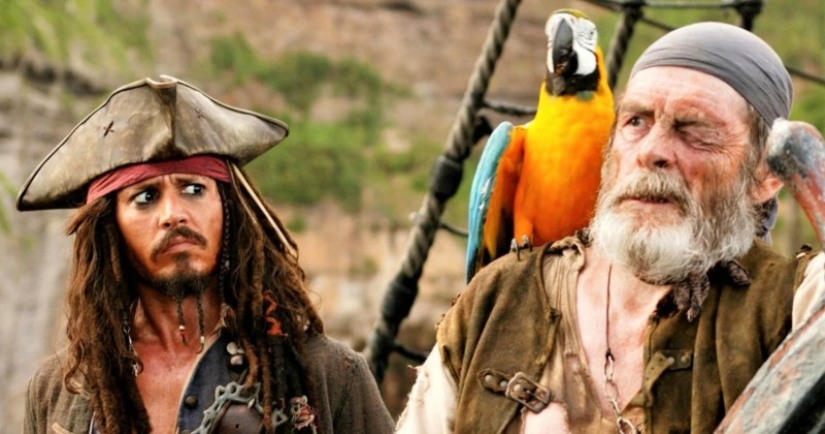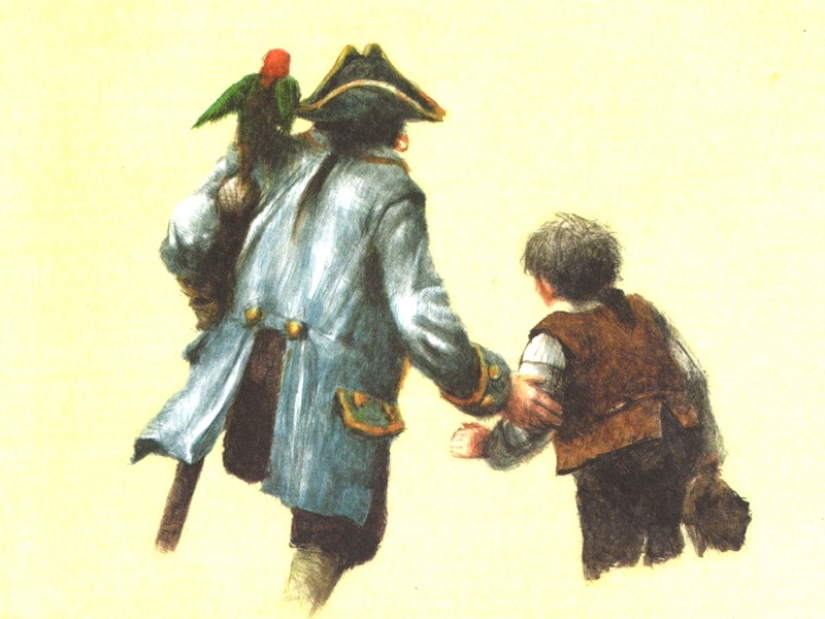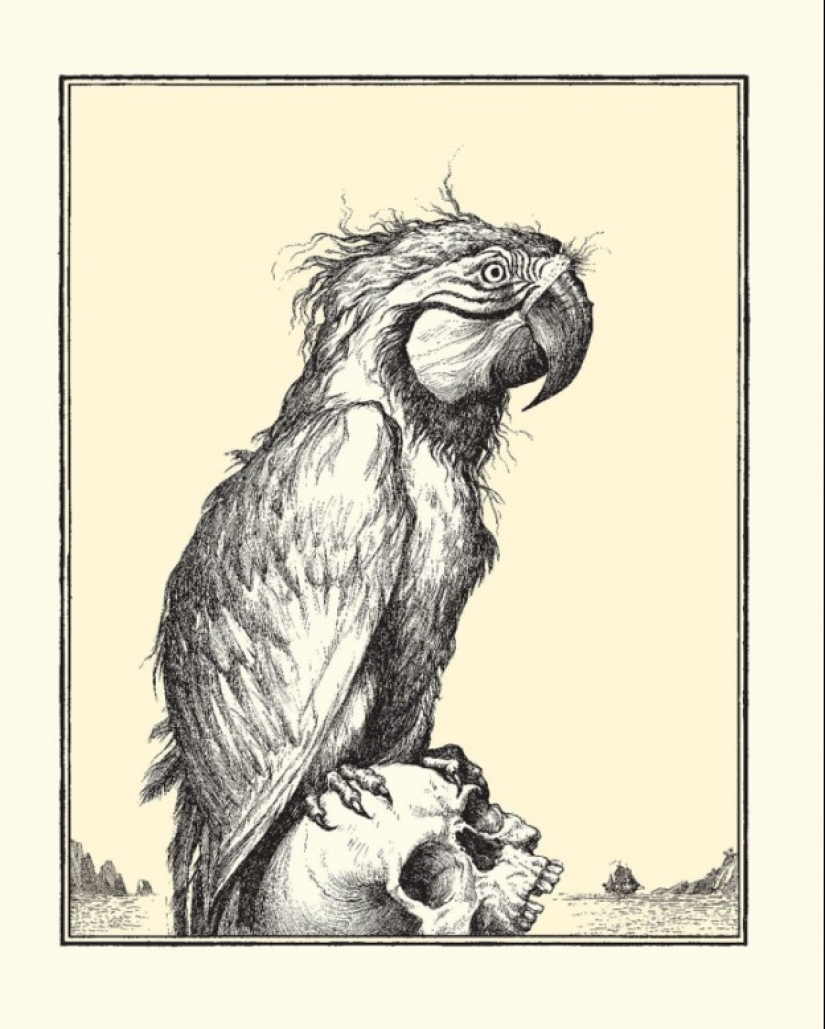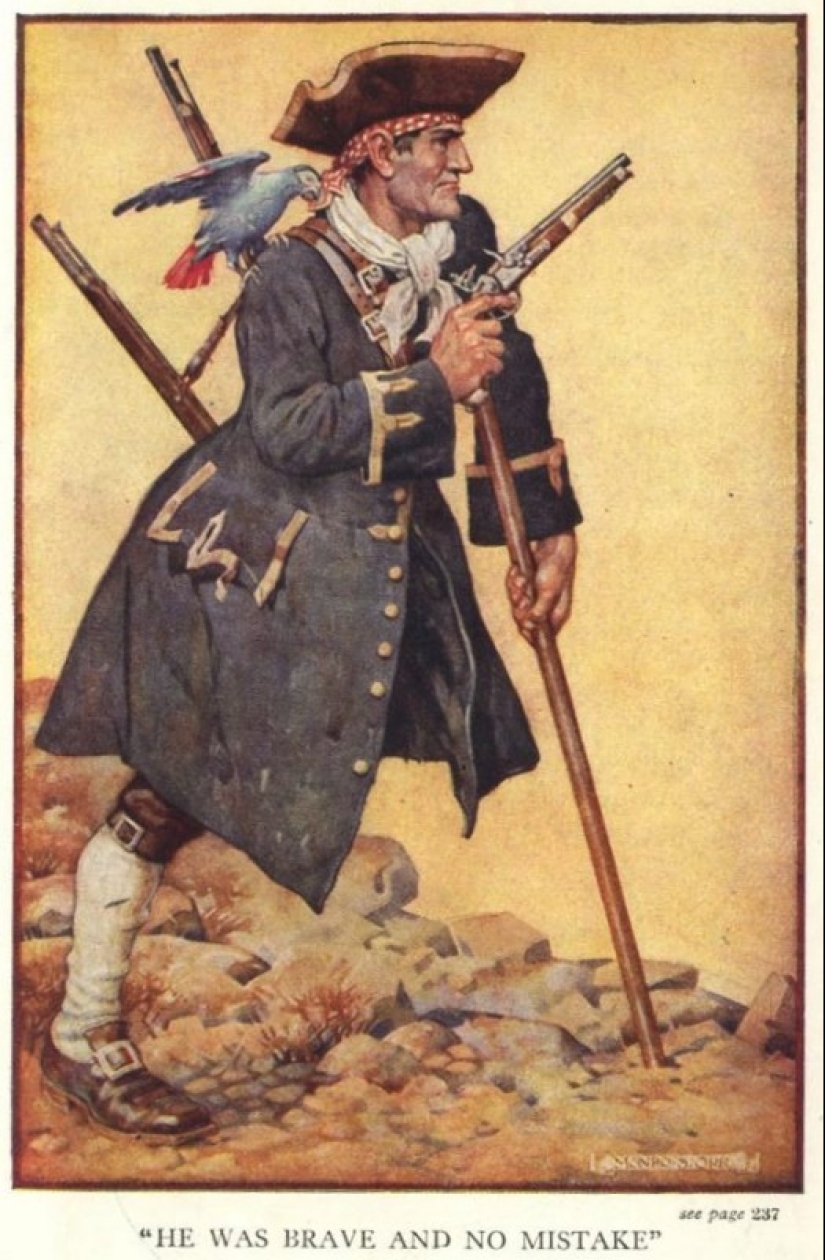Why pirates are depicted with parrots
In our view, the classic pirate is a stern man with a wooden leg, an eye patch, armed to the teeth and with a parrot on his shoulder. This image was created by mass culture and, of course, it is collective. But still, why are pirates depicted with parrots?

In many literary works and movies, parrots are shown as pets of pirates. Birds, who are certainly talking, accompany their owners everywhere, sitting on their shoulder. This choice seems very strange, because it is more logical and easier to keep a cat on a sailboat. It is easier to care for, and besides, it can fight rodents, which have become a real disaster for sailors.

It turns out that parrots for pirates were not pets at all. A sea wolf with a bird on his shoulder first appeared in Stevenson's novel Treasure Island, published in 1883. The work became incredibly popular and immediately became a classic of the pirate novel. From the brilliant book by the Scottish author, the pirates "scattered" through hundreds of other books, and then films. Of course, the parrot on the shoulder was so interesting and exotic, so the image stuck.
But was the parrot an invention of Stevenson, like, for example, the famous "black mark"? Historians say that not quite. Parrots really often became companions of pirates in the 18th and 19th centuries, though not for long. For seafarers, the bird was not a pet, but... a commodity.

When sailing the seas, a trip to distant countries could take months. Therefore, everything that was brought from there was valued very highly. Exotic animals from South America, Africa, Australia and Southeast Asia were in great demand among the rich of the Old World. They were willing to pay a lot of money for monkeys and parrots.

In the 18th century, a macaw, jacko or cockatoo parrot was paid an amount comparable to a three-month salary of a common sailor. Therefore, the sailors did not miss the opportunity to earn extra money and acquired or caught these beautiful and intelligent birds in distant countries. Monkeys were also in demand, but due to the complexity of transportation, sailors rarely contacted them.

Pirates were not called "gentlemen of fortune" for nothing. Their financial well-being largely depended on fortune, which could send them good loot or not. This is still relevant today. Therefore, like any other sailor of that time, the pirate was not averse to earning extra money. The sale of parrots was not as profitable as robbery, but it was not punishable by hanging. A sailor hanging around a port city with a parrot on his shoulder was not uncommon 200-300 years ago. This colorful image has taken root perfectly in pirate novels.
Recent articles

Most of us think that the color of the eggshell does not play any role and it is possible not to pay attention. But it's not and ...

The more we rely on technology, the more potential power hackers gain over us. It doesn't matter if their goal is to help or cause ...

Creating a good portrait is one of the most difficult tasks for any photographer. In order to make a really natural and memorable ...